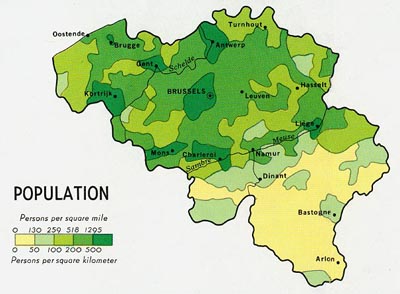





Population research is also an important way of gaining insight into your (potential) audience. It is an especially useful form of research in the context of a policy plan to expand the audience. After all, population research also investigates the nonusers and can therefore provide insights into the causes of the non-use. It is useful because it can teach you something about your potential (target) audience. Who are they? How can you best reach them? Why don’t they come? What kind of underlying thresholds are holding them back? Is it due to a lack of information, prices that are too high, an inappropriate range, or general lack of interest? Each reason requires a different policy approach. The problem is that population research is extremely labour and cost intensive. That is why it is rarely or never performed by a single institution or organisation. A number of sources such as general population APS statistics (department for administrative planning and statistics), the VRIND-indicators (Flemish regional indicators), the population survey by Re-Creatief Vlaanderen, Thuis in de Stad / Stadsmonitor and the Flanders participation survey provide a source of generic information.
Exemple: IPSOS-survey, 2004 [in Dutch ![]() or French
or French ![]() ]
]

A name recognition study gives an organisation insight into the recognition of its organisation, products / services and/or brand (visitors, non-visitors). The concept is often assessed according to the following types of recognition: “spontaneous” and “aided” recognition. “Spontaneous” means that the respondents are asked to come up with names unprompted, whereby the degree of top-of-mind awareness can also be assessed. “Aided” means that the respondents are given a list of names of companies or brands, and are asked to indicate which ones they recognise.
Example: Logo-onderzoek Nele Scheerlinck KBIN ![]() (2011) | Enquête sur le logo et l’identité visuelle de IRSNB
(2011) | Enquête sur le logo et l’identité visuelle de IRSNB ![]() (2011)
(2011)
With image research, a study is made of the image that target groups (visitors, non-visitors) have of an organisation, its products and/or services or the organisation as a whole.
Example: IPSOS-survey, 2004 [in Dutch ![]() or French
or French ![]() ]
]
In communication research, a study is made of the effect of ‘the message’ that is conveyed via the media, advertisements, the Internet or other promotional channels. Communication research will investigate, for example, the percentage of the pre-established target groups who have seen / understood / accepted the message. Communication research often involves a pretest and a posttest. The pretest or zero reference measurement will then be performed prior to the development of an advertising or media campaign. After such a campaign has been conducted, a posttest study or effect measurement will be carried out, in order to determine whether the desired advertising effects have been achieved. Depending on the purpose, both quantitative and qualitative research can be performed.
Example: Campaign Dino-gallery KBIN-IRSN (2008) [in Dutch ![]() or French
or French ![]() ]
]
Website research provides insight into the strengths and weaknesses of a website to be launched/which has already been launched and generates information on how a website might be better adapted to a target group. With website research, an investigation is made into all aspects of the website (usability, general impression, user friendliness, emotional aspects of and associations with the website, etc.). Many organisations monitor their websites based on website statistics. In addition, other ad hoc website research can be carried out. This often consists of a number of in-depth interviews in which the website is discussed in detail. Online visitors can also be asked to give their opinions. In that case, similar questions can be asked, but it is not possible to further explore the underlying motivations.
Example: Evaluatie van de BIRA-website, BIRA, 2004 ![]() | Evaluation site web IASB, 2004
| Evaluation site web IASB, 2004 ![]()
For many topics, most of the work is already been done. Some–often more conceptual or general questions – can be answered on the basis of existing research and/or previous studies. Desktop research is investigating what data is already available regarding a given problem. This type of data is also referred to as secondary data. It is data that has already been gathered by other researchers in the past. Literature research and desktop research can also serve as preliminary research and this can help to clarify the goals of the research.
Example: Musées et seniors KMSK ![]() | Senioren & musea MRBAB
| Senioren & musea MRBAB ![]()
Benchmarking is another familiar term from the world of marketing. "Benchmarking means systematically investigating the performance and the underlying processes and methods of one or more leading reference-organisations in a given field, and comparing one’s own performance and working methods with these ‘best practices’, with the aim of putting one’s own performance into context and improving it”.
Applied to the audience research for the FSIs this broadly means that a comparison is made between the museums and other visitors’ centres with similar museums and institutions nationally and internationally.